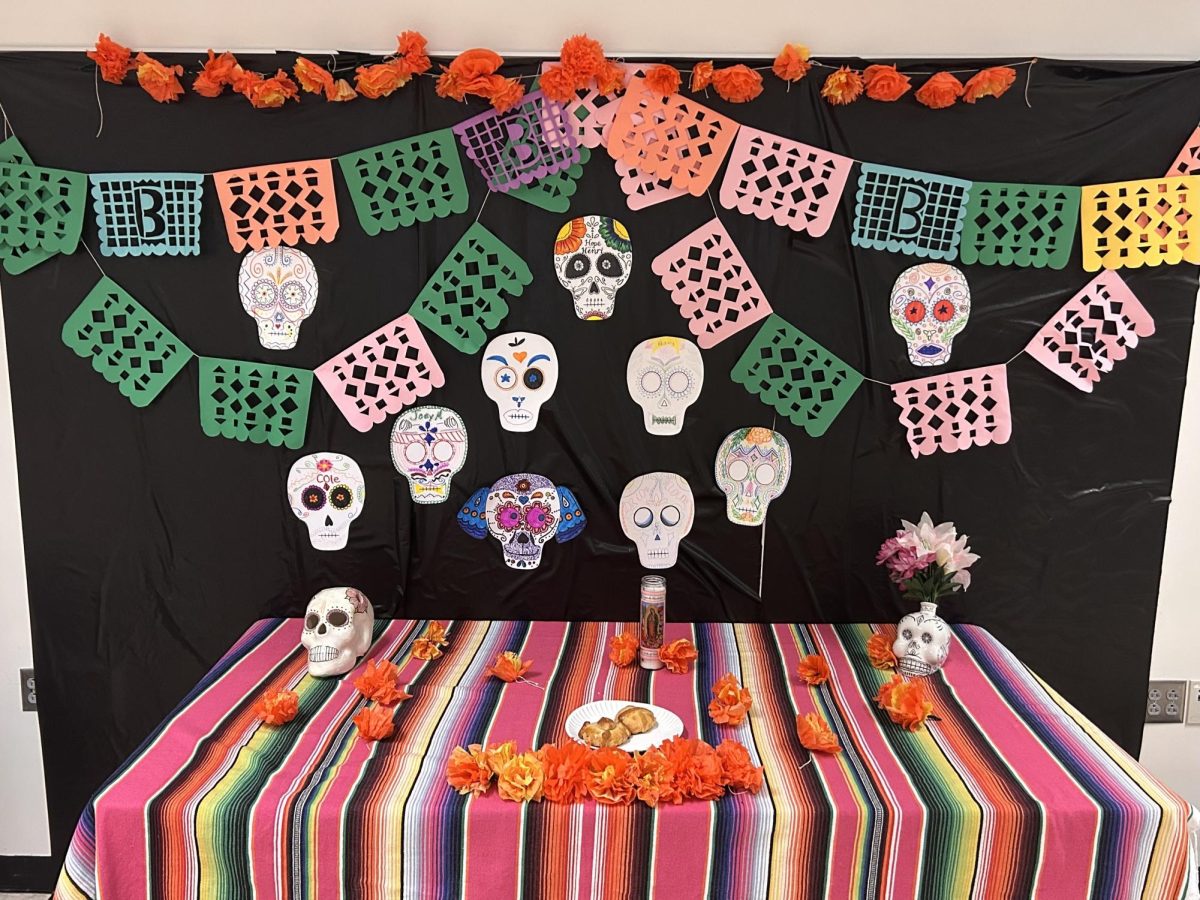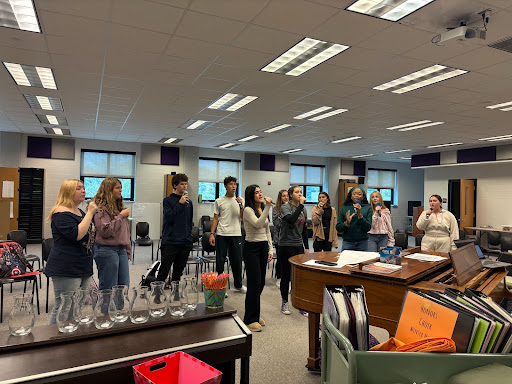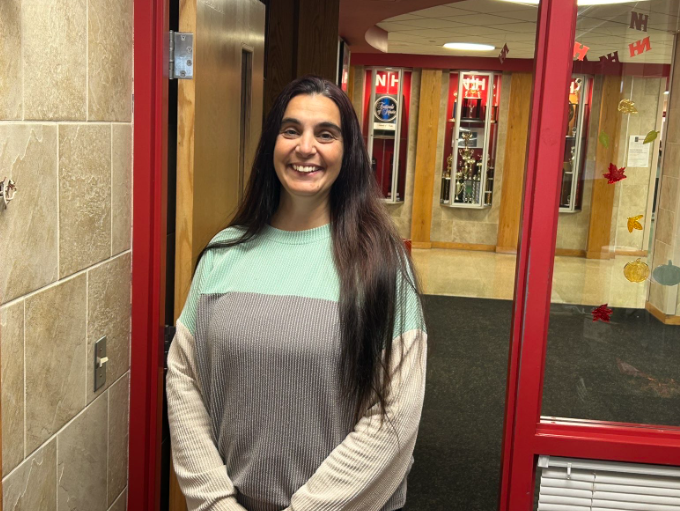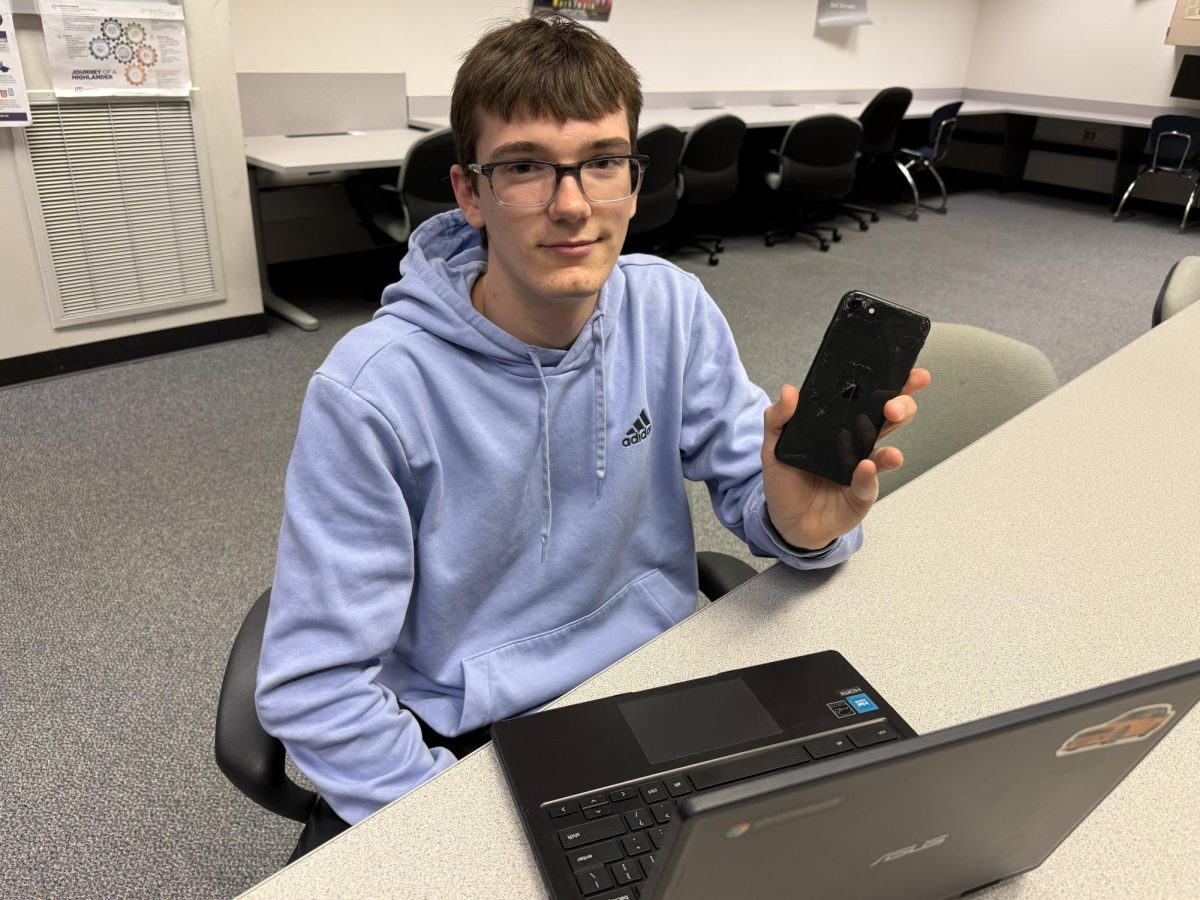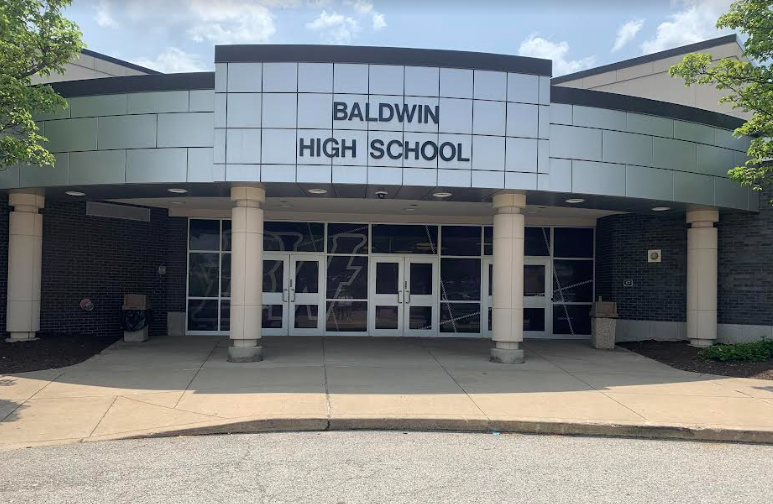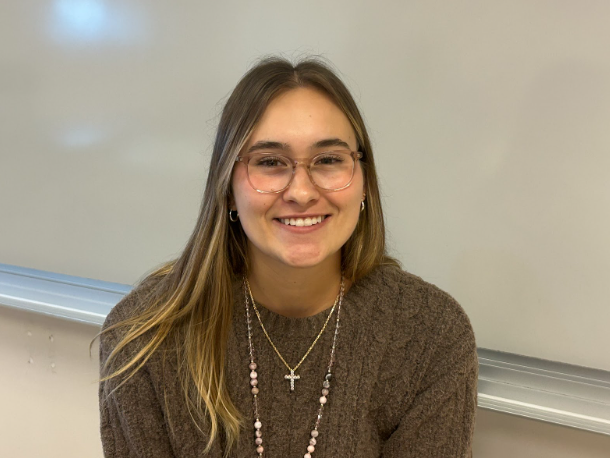Over the past two weeks, Baldwin Spanish students have been working during Highlander Time on constructing an ofrenda, or altar, to celebrate Día de los Muertos, also known as the Day of the Dead.
Maggie Negrete, a Mexican-American illustrator and educator, led the project through a partnership with the Pittsburgh Cultural Trust. Over four sessions, Negrete taught students how to put together a handmade ofrenda, which honors ancestors who have passed away.
“The first two sessions we’ve been creating sugar skull decorations and marigold tissue paper flowers,” Spanish teacher Rebecca Mackin said.
In the third Highlander Time session, they made papel picado, a Mexican paper craft that involves intricate designs cut into tissue paper. It symbolizes the fragility of life, with the belief that it allows spirits to pass through the banners.
“It celebrates the beauty of life and the coming and going of spirits,” Mackin said.
Negrete said it’s important to teach students about the truth of Día de los Muertos, rather than just the sugar skulls and candles that American pop-culture often simplifies it to be.
“It’s a celebration of ancestors coming back from the underworld – from the afterlife and traveling back to the human world. In the Mexican worldview, the underworld is a physical place you can travel to,” she explained. “So spirits, gods, (and) people can pass back and forth at will, and this time of year is when they can do it the most easily.”
Senior Violet Kearney appreciates the opportunity to learn about another culture through this project.
“My favorite part was learning more about Mexican culture. I think it’s interesting. It’s been an eye-opening experience,” Kearney said. Americans “know what Day of the Dead is – we just don’t know a lot of the history behind it.”
Negrete hopes students understand how alive and changing the tradition is, and how it’s grown over time to include modern influences.
“The traditions are ancient, but they’re always changing. They’re highly adaptable to the influence of other cultures. We talked about the influence of Chinese paper making on the culture, newspaper cartoons on Dia de los Muertos – even to modern day, where we see the influence of movies and cartoons displaying the traditions,” Negrete said. “So it’s a holiday and a culture that is alive and changing.”
Mackin is thankful for the experience her students have had through this process.
“It’s just a really laid-back and hands-on way for them to learn about it in a way that we typically don’t have time to get into in such detail within our classes. They’ve gotten a really great first-hand portrayal from someone who not only has an artist’s background, but is also of Mexican descent,” Mackin said. “That’s a really nice component of it – that she brings things that I can’t necessarily share.”
In the last session on Wednesday, students put together the final ofrenda, compiling all of their crafting and adding any personal items they wished to include.
Senior Abby Horn likes the celebrative aspect of the holiday, and the sense of community it provides.
“People here grieve more privately, so they have their own ways to remember people. But this is a really positive way to remember the dead instead of just always feeling negative about it,” Horn said.
Dia de los Muertos fiestas have been happening throughout this week in Mackin’s Spanish classes.

